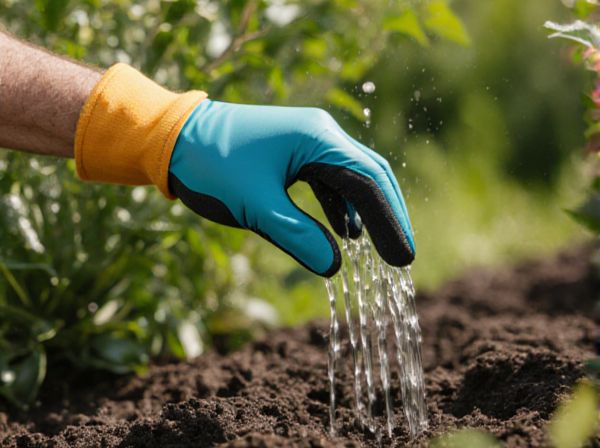
Graywater Use vs Rainwater Harvesting Illustration
Graywater use involves recycling moderately used water from household activities like bathing and washing for irrigation, conserving potable water while reducing wastewater disposal. Rainwater harvesting captures and stores precipitation from roofs or surfaces to provide a natural, chemical-free water source for gardening and household needs. Both methods enhance water sustainability in permaculture by maximizing resource efficiency and minimizing environmental impact.
Table of Comparison
| Aspect | Graywater Use | Rainwater Harvesting |
|---|---|---|
| Source | Used household wastewater (excluding sewage) | Collected precipitation from roofs or surfaces |
| Water Quality | Moderate, requires filters for reuse | Generally clean, may need simple filtration |
| Primary Uses | Irrigation, toilet flushing, landscaping | Garden watering, potable use (with treatment), livestock |
| Storage Method | Graywater tanks or direct pipeline systems | Storage tanks, cisterns, barrels |
| Environmental Impact | Reduces freshwater demand, prevents wastewater discharge | Reduces stormwater runoff, conserves potable water |
| Legal Constraints | Regulated in many regions, must meet health guidelines | Generally permitted, varies by location |
| Installation Complexity | Moderate to high, requires plumbing adjustments | Low to moderate, depends on collection system size |
| Maintenance Needs | Regular inspection, filter cleaning, system flushing | Tank cleaning, filter checks, gutter maintenance |
Understanding Graywater and Rainwater: Key Differences
Graywater is gently used water from baths, sinks, and washing machines, typically containing low levels of contaminants, making it suitable for irrigation and landscape reuse within permaculture systems. Rainwater harvesting involves collecting and storing precipitation from rooftops or other surfaces, providing a clean, natural source of water ideal for diverse uses including drinking, irrigation, and aquaculture. The key differences lie in their sources, treatment requirements, and potential applications, with graywater requiring filtration or treatment for safety, while rainwater often needs minimal processing but depends on local rainfall patterns.
Permaculture Principles in Water Management
Graywater use and rainwater harvesting both align with permaculture principles by promoting sustainable water management and resource efficiency. Graywater reuse reduces freshwater demand by recycling household wastewater for irrigation, while rainwater harvesting captures natural precipitation to enhance on-site water availability and soil hydration. Integrating these systems supports water conservation, soil health, and ecosystem resilience, key tenets of permaculture design for sustainable living.
Graywater Systems: Benefits and Limitations
Graywater systems recycle water from sinks, showers, and laundry to irrigate gardens, reducing freshwater consumption and lowering utility bills. These systems improve soil moisture and support plant growth by providing nutrient-rich water, but they require proper filtration to prevent clogging and pathogen risks. Limitations include potential buildup of salts and chemicals from household detergents, necessitating careful selection of cleaning products to maintain soil and plant health.
Rainwater Harvesting: Methods and Advantages
Rainwater harvesting involves collecting and storing rainwater from rooftops or other surfaces for later use, providing an efficient method to supplement water supply in permaculture systems. Methods include rooftop collection with gutters leading to storage tanks, contour swales directing runoff to recharge groundwater, and the use of rain gardens to capture and filter water. This technique reduces dependency on municipal water, mitigates soil erosion, enhances groundwater levels, and supports sustainable irrigation practices in drought-prone areas.
Water Quality Considerations in Graywater and Rainwater
Graywater typically contains soap residues, oils, and organic matter which require treatment before irrigation to prevent soil contamination and plant damage. Rainwater harvesting collects relatively clean water but risks contamination from roof materials and airborne pollutants, necessitating filtration and first-flush systems for quality assurance. Proper management of both sources ensures sustainable water reuse while protecting soil health and plant vitality in permaculture systems.
Installation and Maintenance Requirements
Graywater systems require plumbing modifications and regular monitoring to prevent odors and clogs, with filter maintenance typically every few months. Rainwater harvesting involves roof collection systems, gutters, and large storage tanks, needing seasonal cleaning and inspection for debris and leaks. Both methods demand initial setup costs and consistent upkeep, but rainwater harvesting systems generally require less frequent maintenance than graywater systems.
Legal and Regulatory Aspects
Graywater use and rainwater harvesting are subject to varying legal and regulatory frameworks depending on regional water management policies and environmental protection laws. Permaculture practitioners must navigate local restrictions on graywater disposal, often requiring system permits and adherence to health guidelines to prevent contamination. Rainwater harvesting regulations may limit collection volumes or mandate specific storage methods, emphasizing compliance to support sustainable water use within legal boundaries.
Environmental Impact and Sustainability
Graywater use conserves potable water by recycling household wastewater for irrigation, reducing strain on freshwater sources and minimizing wastewater discharge into ecosystems. Rainwater harvesting collects and stores rainwater, decreasing reliance on municipal supply and mitigating stormwater runoff that can cause soil erosion and water pollution. Both practices enhance sustainability by promoting water conservation, reducing environmental pollution, and supporting resilient permaculture systems.
Integrating Graywater and Rainwater in Permaculture Design
Integrating graywater and rainwater harvesting in permaculture design enhances water efficiency by reducing reliance on potable water sources and promoting sustainable irrigation practices. Treating graywater from household activities safely allows it to be reused for garden irrigation, while rainwater harvesting captures natural precipitation to replenish soil moisture and support plant growth. Combining these systems optimizes resource use, improves resilience against drought, and fosters a closed-loop water cycle within permaculture landscapes.
Choosing the Right System for Your Permaculture Garden
Graywater use in permaculture gardens efficiently recycles household wastewater for irrigation, reducing freshwater consumption and promoting sustainable water management. Rainwater harvesting captures and stores precipitation, providing a natural and renewable water source that supports plant growth during dry periods. Selecting the right system depends on factors like local climate, water availability, garden scale, and specific water quality needs to optimize resource use and ecosystem health.
Graywater Use vs Rainwater Harvesting Infographic

 gardendif.com
gardendif.com